Structural Performance of Composite Shear Walls under Compression
Abstract
:1. Introduction
2. Experiments
2.1. Geometrical Descriptions of Specimen
2.2. Material Properties
2.3. Loading and Measuring Scheme
3. Experimental Results
3.1. Experimental Phenomena and Failure Modes
3.2. Force-Displacement Curves
3.3. Degradation of Axial Rigidity
3.4. Strains
4. Calculation for Axial Compressive Bearing Capacity
4.1. Steel Plate Resistance
4.1.1. Local Buckling Analysis of Unstiffened Steel Plate
4.1.2. Local Buckling Analysis of Stiffened Steel Plate
4.1.3. Effect of Local Buckling on Bearing Capacity
4.2. Strength of Concrete
4.2.1. Composite Wall with Two Skins of Steel Plate
4.2.2. Composite Shear Wall with Built-In Steel Plate
4.3. Numerical Calculation
4.4. Load Bearing Capacity of Composite Wall
5. Conclusions
- (1)
- The different layout forms of steel plate have a great influence on its buckling, which can affect the bearing capacity of the plate. Under the condition of similar steel ratio, the built-in steel plate buckles later than the yield of the steel plate, and the steel plate is in a state of full-section compression. However, the buckling of the external steel plate occurs earlier than the yield of the steel plate, and the steel plate only yields in the range of effective width at both ends, and demonstrates post-buckling strength.
- (2)
- The different position of the steel plate forms a different concrete inhibition effect, and the constitutive relation of the concrete is presented by various methods, with key elements of parameter r and the axial compressive strength of the confined concrete fcc. The axial load-strain curves, calculated by a numerical method, are in good agreement with the experimental curves.
- (3)
- According to the buckling effect of the steel plate, the axial compressive strength increases with confined concrete. The calculated equation for the axial compressive bearing capacity of the composite shear wall, is established, and the calculated results are in good agreement with the experimental results.
- (4)
- Compared to the composite wall with the unstiffened built-in steel plate, the axial compressive bearing capacity of the composite wall with the external steel plate improved by 28.2%, the elastic plastic deformation capacity increased by 7.1 times, and the steel plate and concrete demonstrated a good cooperative performance.
Acknowledgments
Author Contributions
Conflicts of Interest
References
- Wright, H. The Axial Load Behaviour of Composite Walling. J. Constr. Steel Res. 1998, 45, 353–375. [Google Scholar] [CrossRef]
- Wright, H.D. Local stability of filled and encased steel sections. J. Struct. Eng. 1995, 121, 1382–1388. [Google Scholar] [CrossRef]
- Mydin, M.A.; Wang, Y.C. Structural performance of lightweight steel-foamed concrete-steel composited walling system under compression. Thin-Walled Struct. 2011, 49, 66–76. [Google Scholar] [CrossRef]
- Uy, B.; Bradford, M.A. Elastic local buckling of steel plates in composite steel-concrete members. Eng. Struct. 1996, 18, 193–200. [Google Scholar] [CrossRef]
- Liang, Q.Q.; Uy, B. Theoretical study on the post-local buckling of steel plates in concrete-filled box columns. Comput. Struct. 2000, 75, 479–490. [Google Scholar] [CrossRef] [Green Version]
- Huang, Z.; Liew, J.R. Compressive resistance of steel-concrete-steel sandwich composite walls with J-hook connectors. J. Constr. Steel Res. 2016, 124, 142–162. [Google Scholar] [CrossRef]
- Fang, X.; Jiang, B.; Wei, H.; Zhou, Y.; Jiang, Y.; Lai, H. Axial compressive test and study on steel tube confined high strength concrete shear wall. J. Build. Struct. 2013, 34, 100–109. [Google Scholar]
- Zhang, Y.; Li, X.; He, Q. Experimental study on local stability of composite walls with steel plates and filled concrete under concentric loads. China Civ. Eng. J. 2016, 49, 62–68. [Google Scholar]
- Liu, H. Study on Seismic Behavior of Composite Shear Wall with Double Steel Plates and Infill Concrete with Binding Bars. Ph.D. Thesis, South China University of Technology, Guangzhou, China, May 2013. [Google Scholar]
- Guo, Z.; Shi, X. Reinforced Concrete Theory and Analyse; Tsinghua University Press: Beijing, China, 2004. [Google Scholar]
- Chen, J. Steel Structure Stability Theory and Design, 6th ed.; Science Press: Beijing, China, 2014. [Google Scholar]
- Chen, S. Guide for Stability Design of Steel Structures, 3rd ed.; China Building Industry Press: Beijing, China, 2013. [Google Scholar]
- Nie, J.G.; Huang, Y.; Fan, J. Vertical buckling-resistant design of steel plate shear wall structure. Build. Struct. 2010, 4, 002. [Google Scholar]
- Mander, J.B.; Priestley, M.J.; Park, R. Theoretical stress-strain model for confined concrete. J. Struct. Eng. 1998, 114, 1804–1826. [Google Scholar] [CrossRef]
- Zuo, Z.L.; Cai, J.; Yang, C.; Chen, Q.J.; Sun, G. Axial load behavior of L-shaped CFT stub columns with binding bars. Eng. Struct. 2012, 37, 88–98. [Google Scholar] [CrossRef]
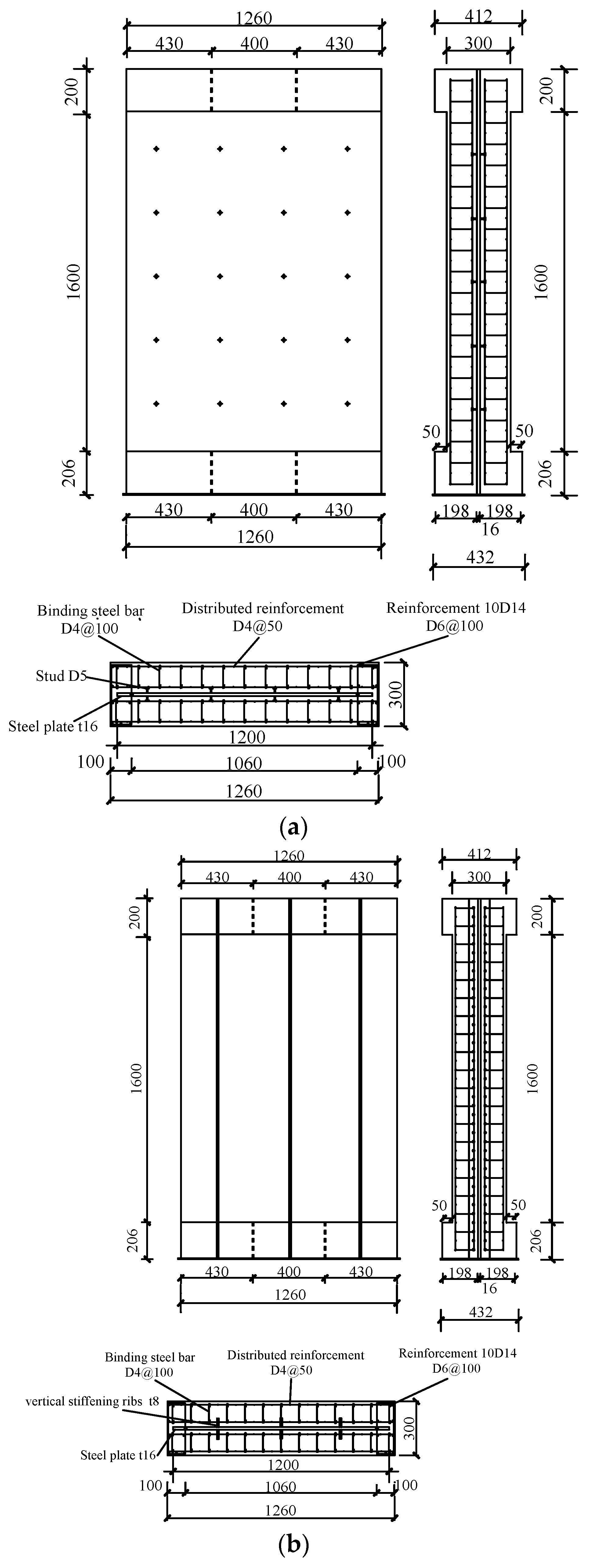
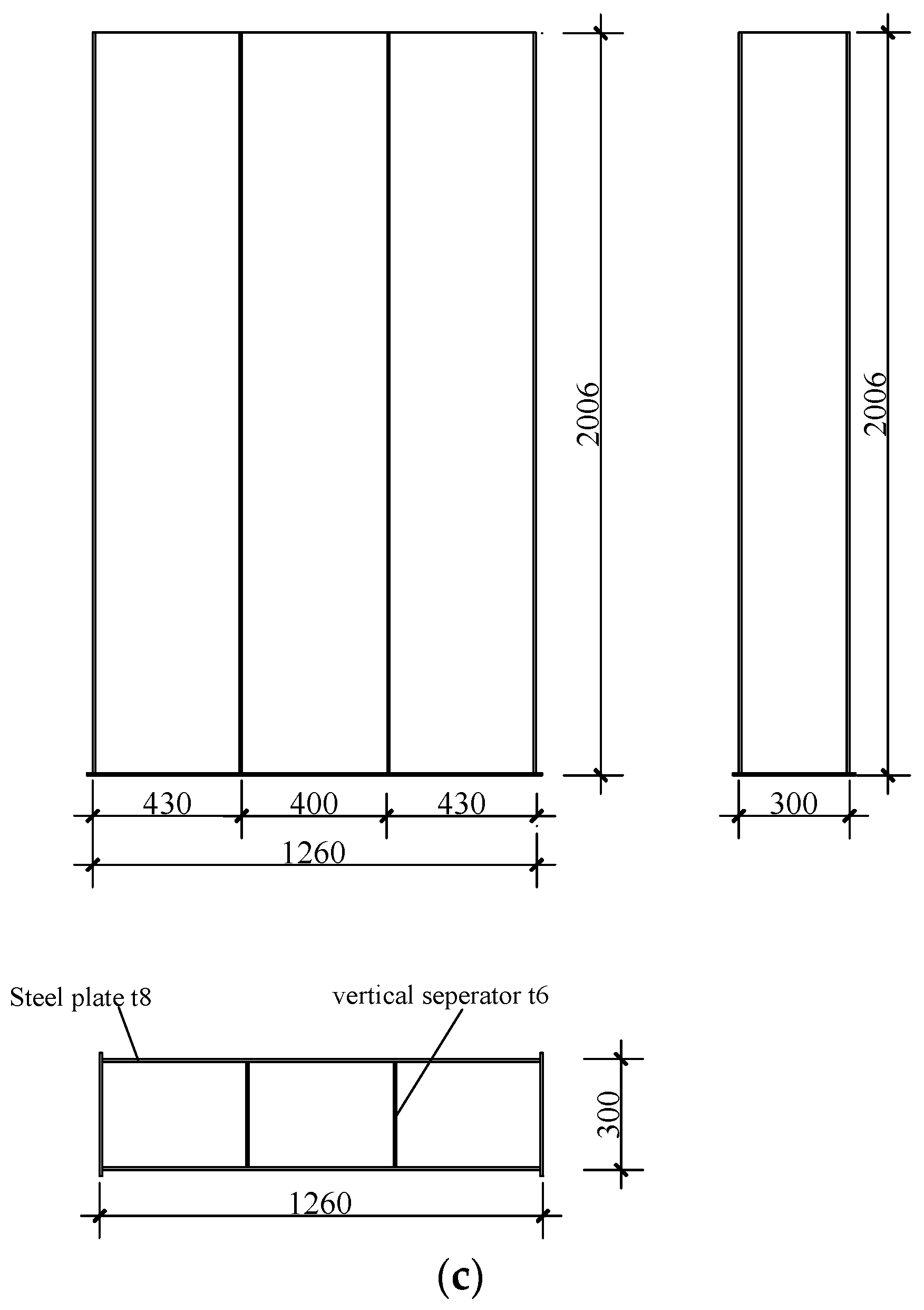
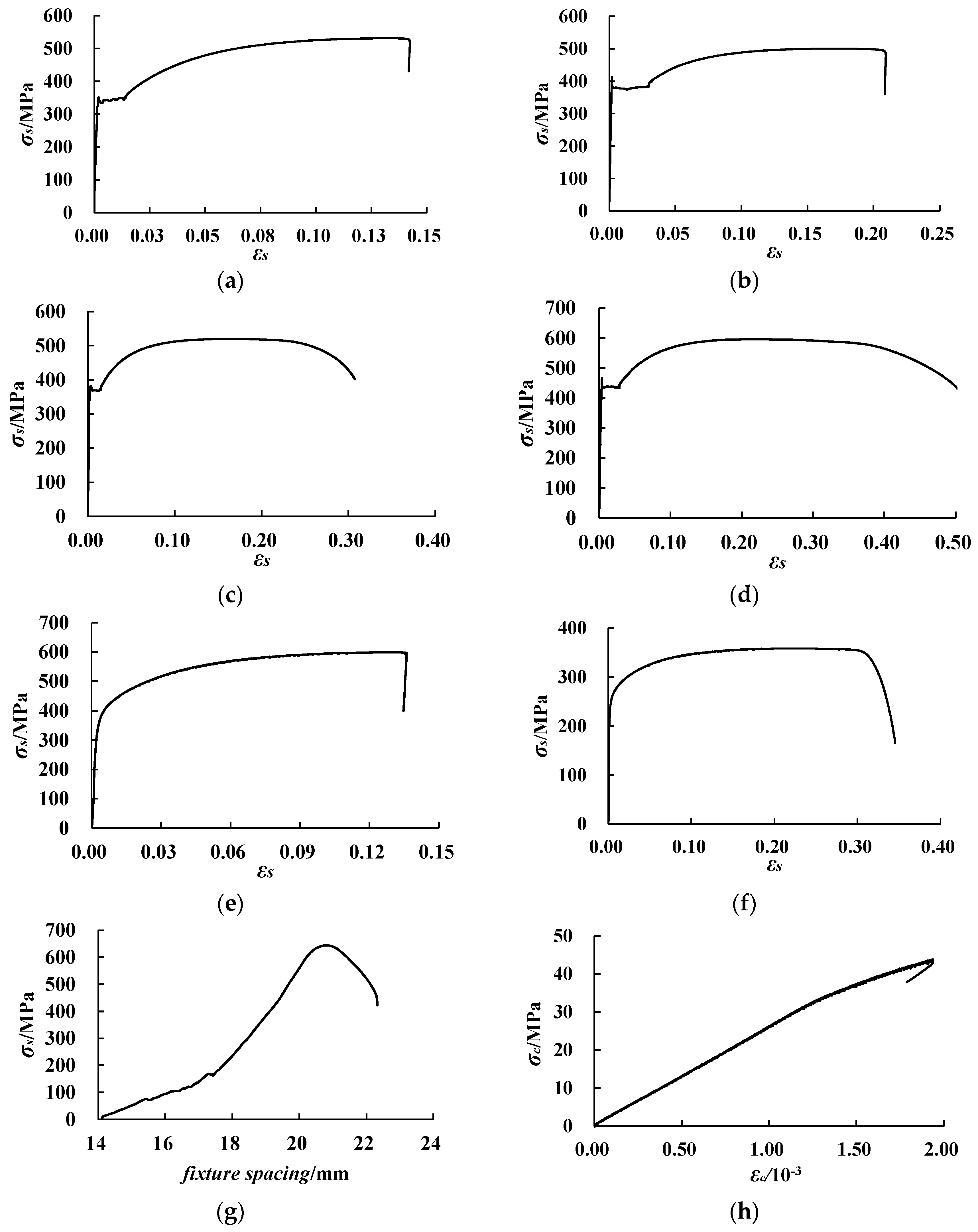
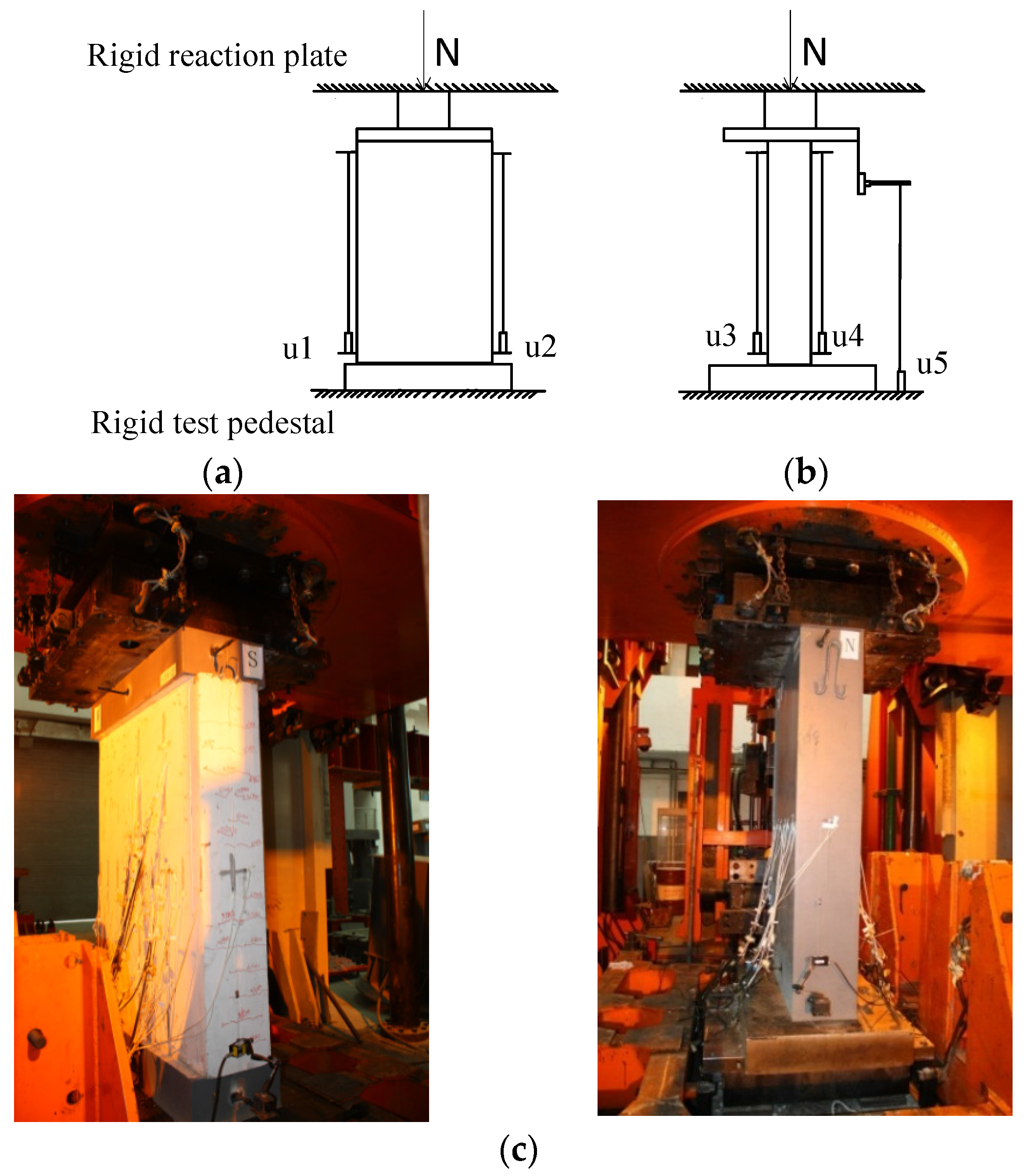
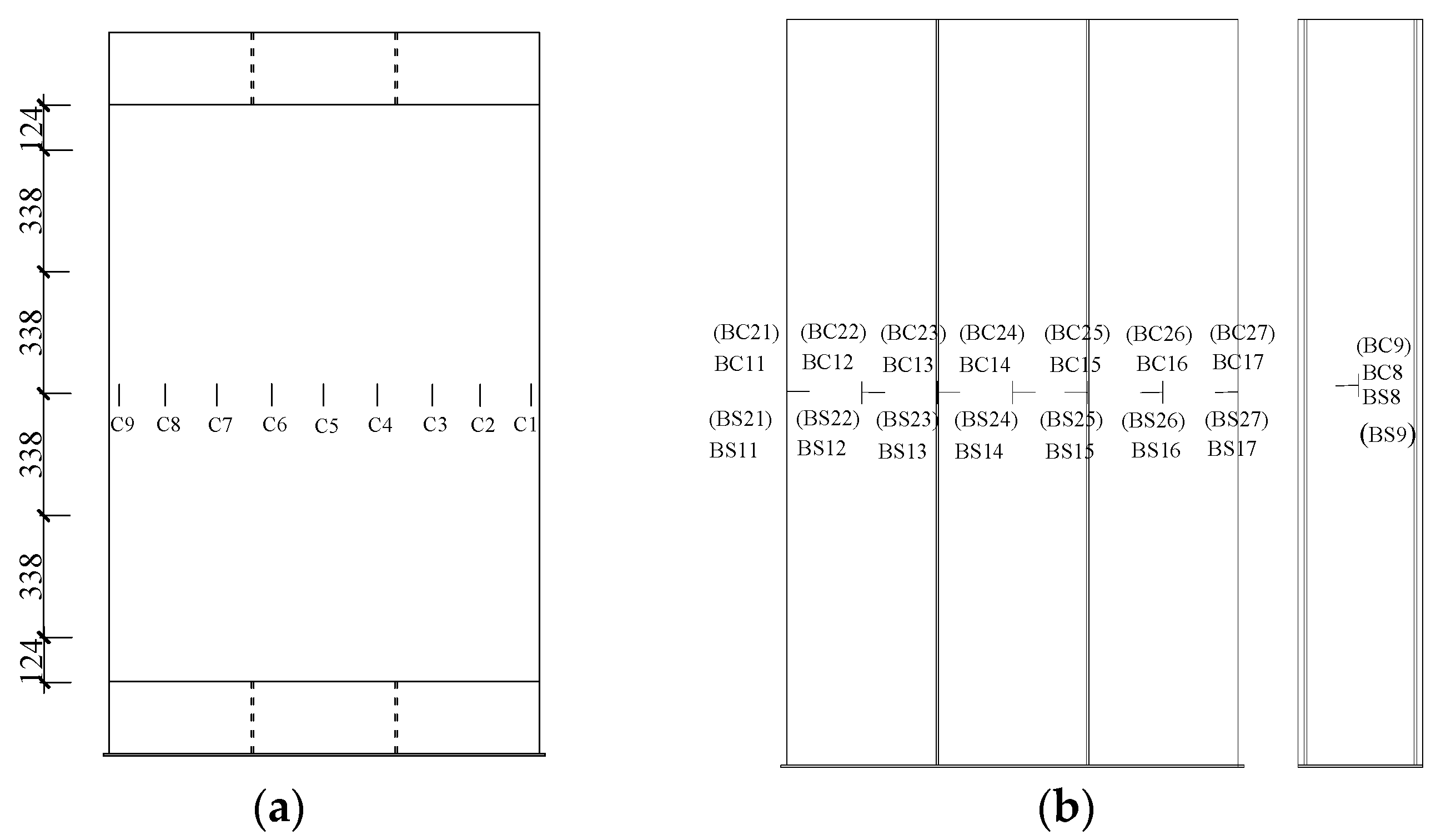

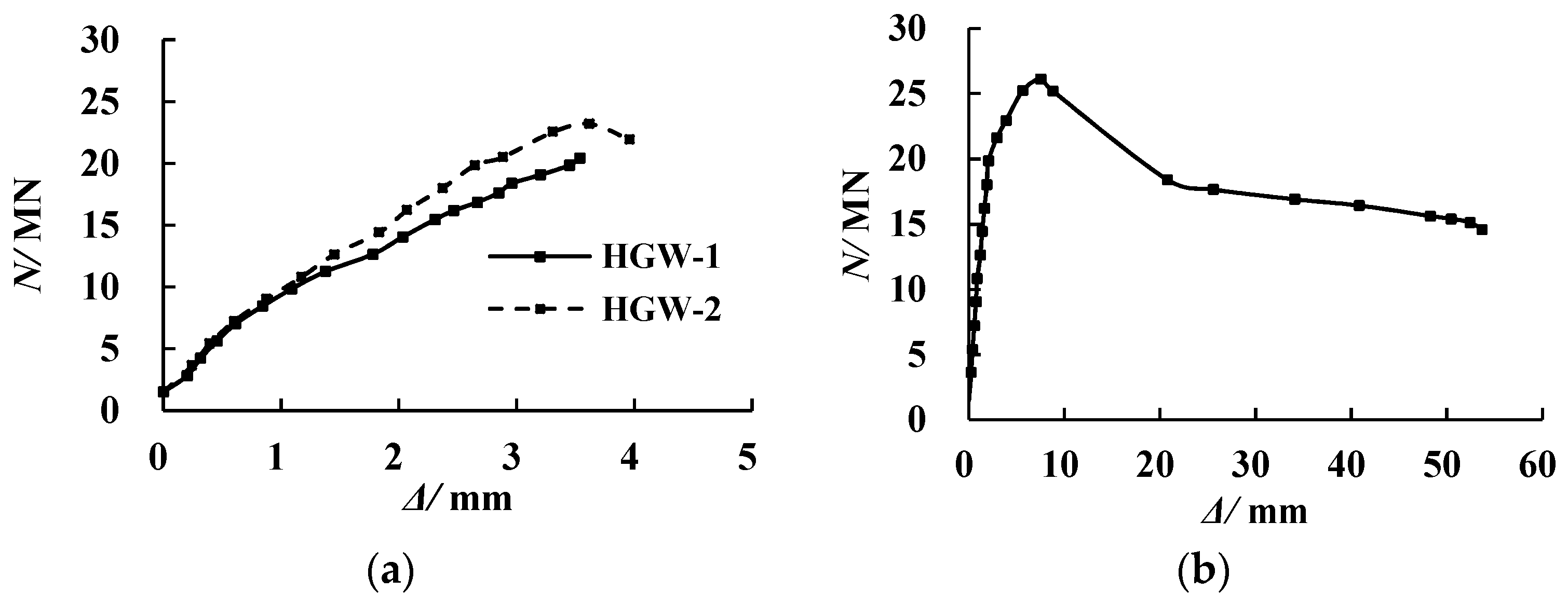
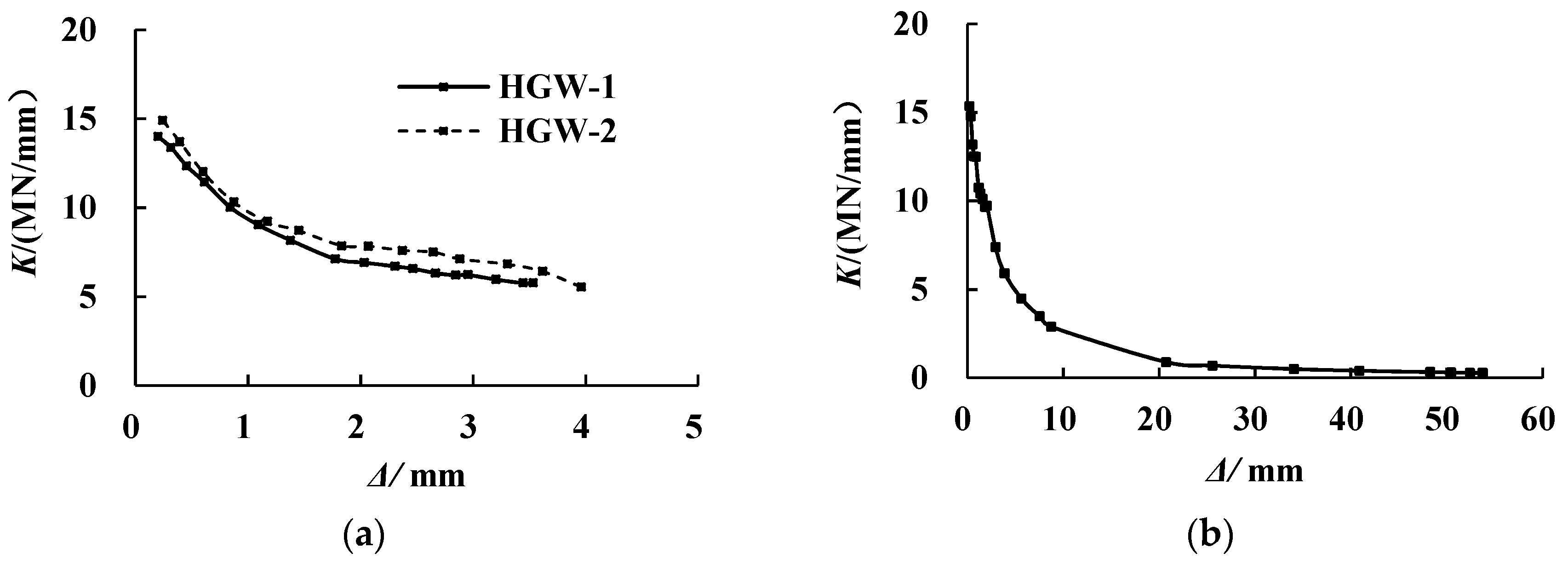
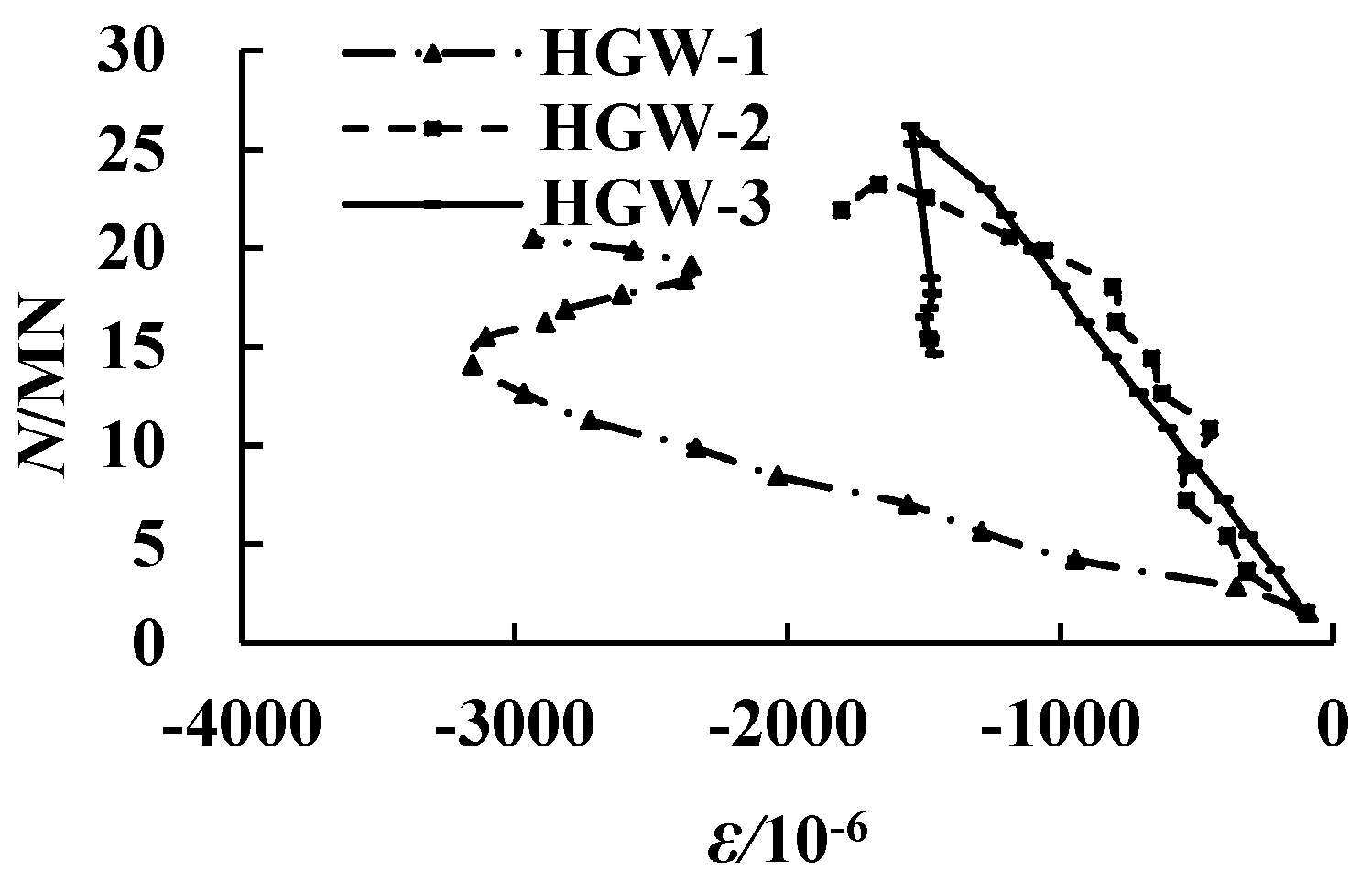
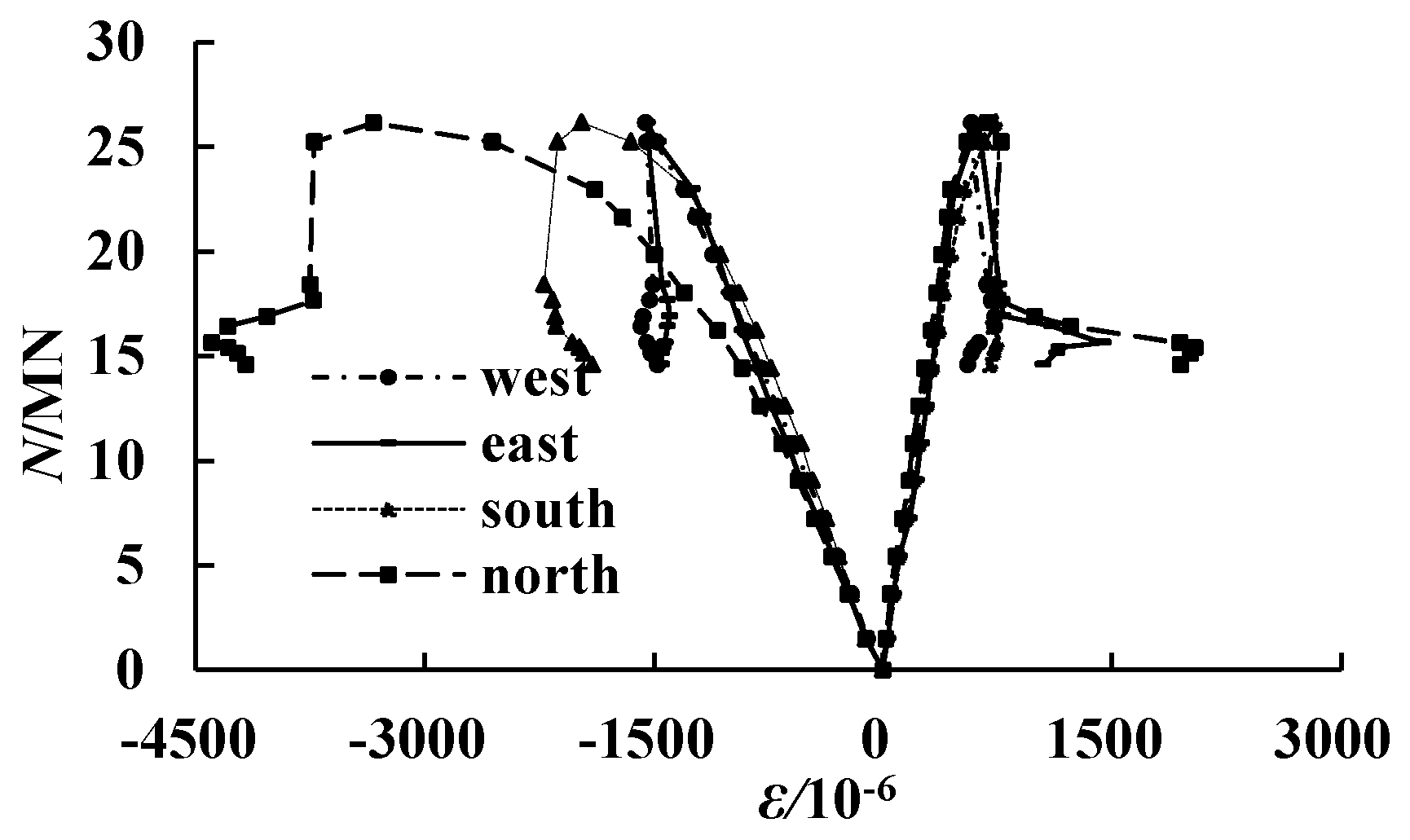
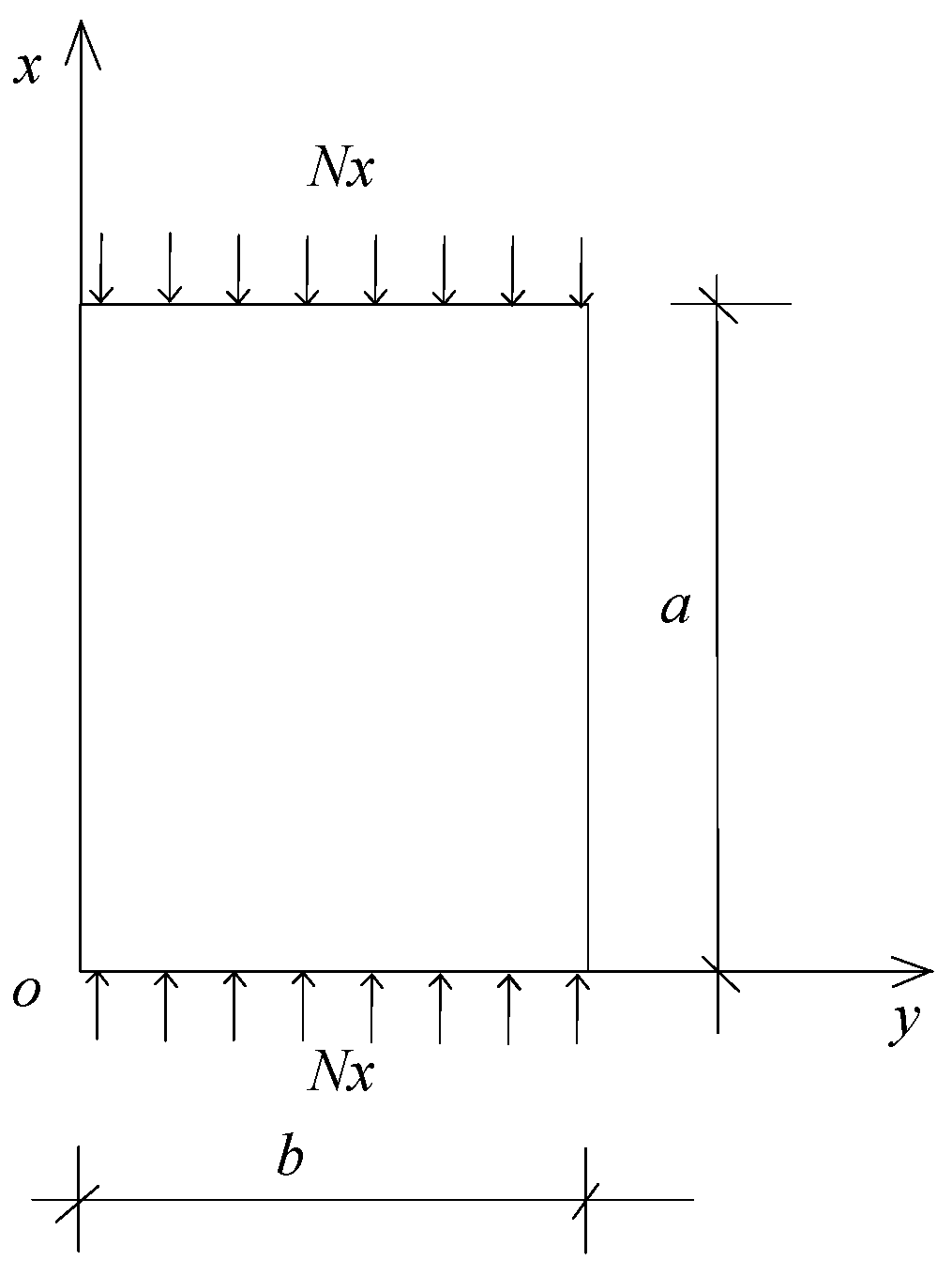
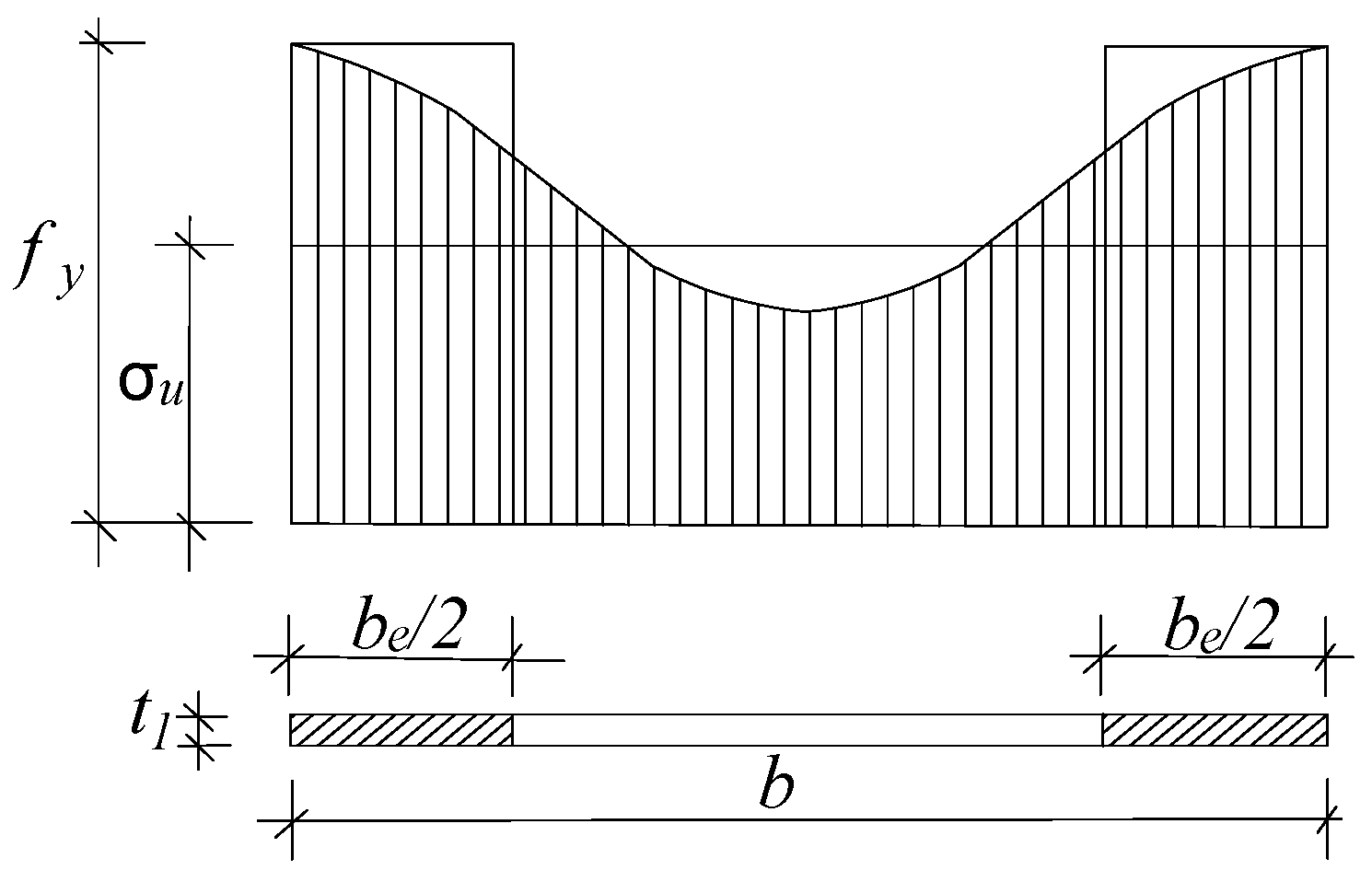
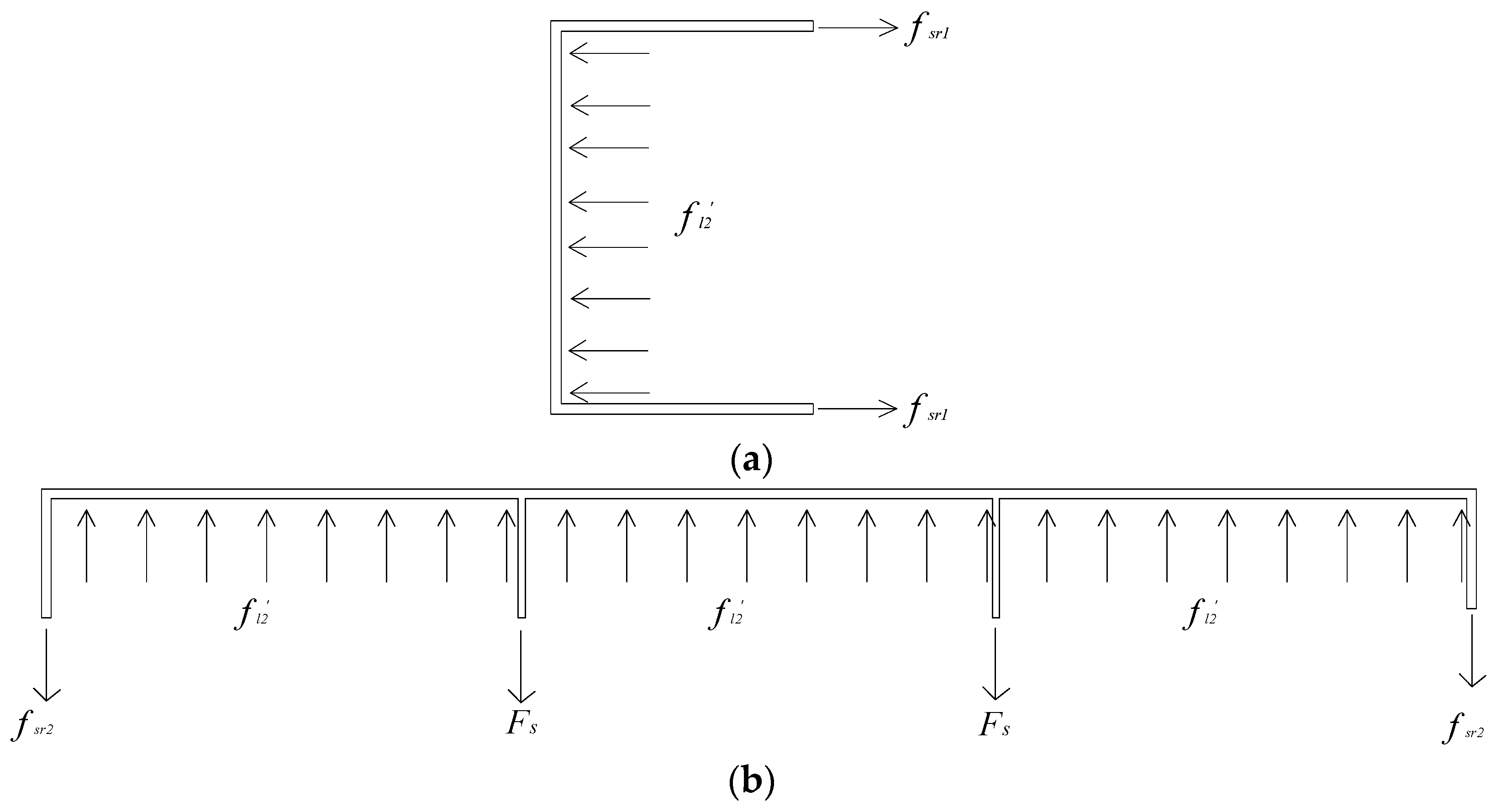
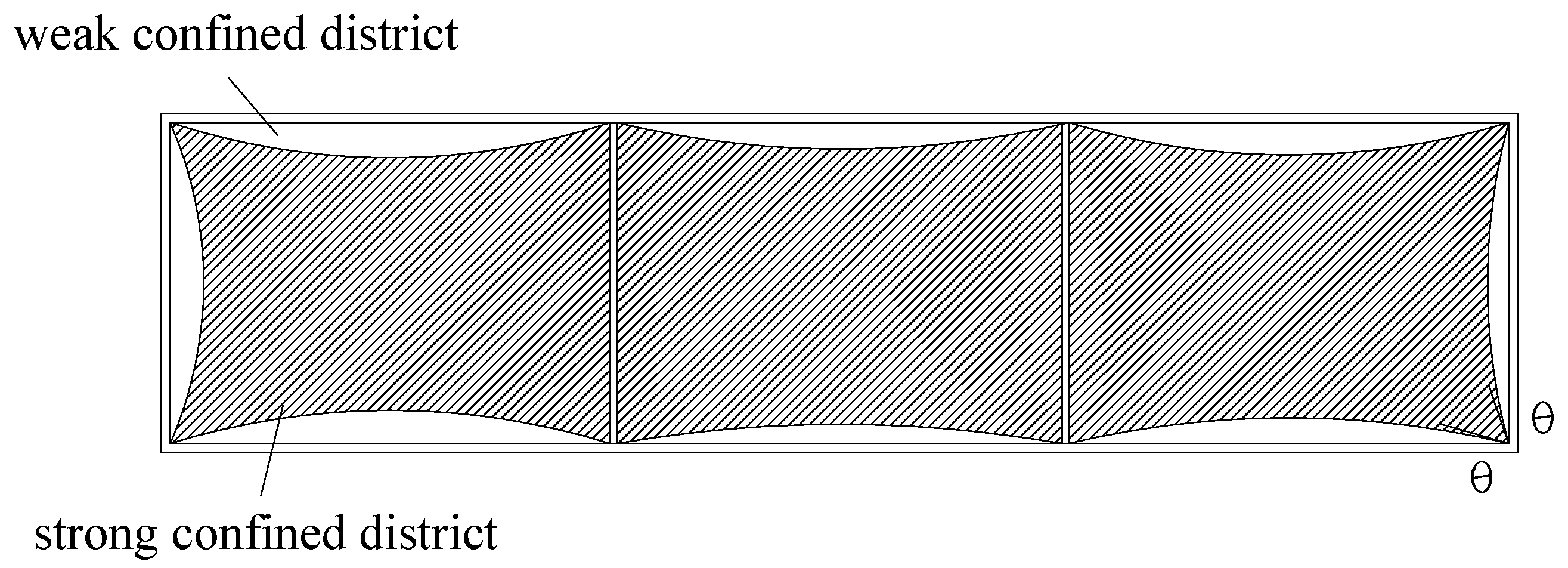
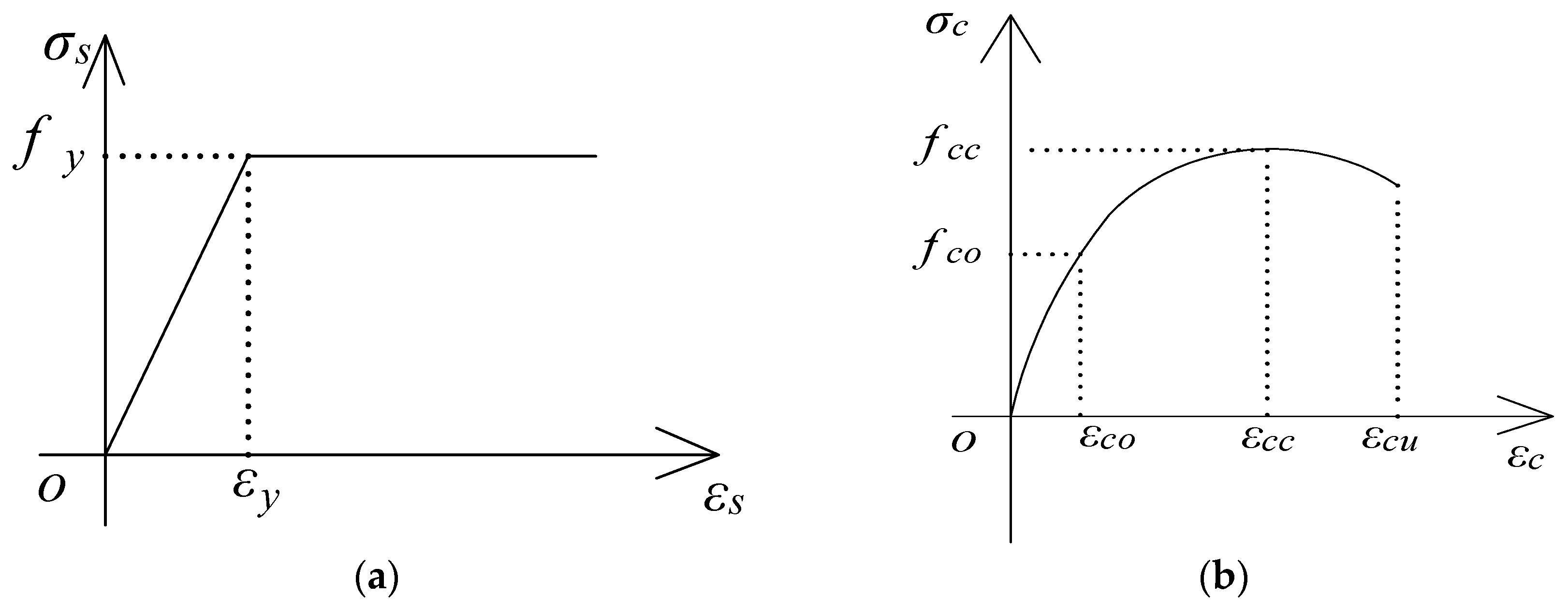
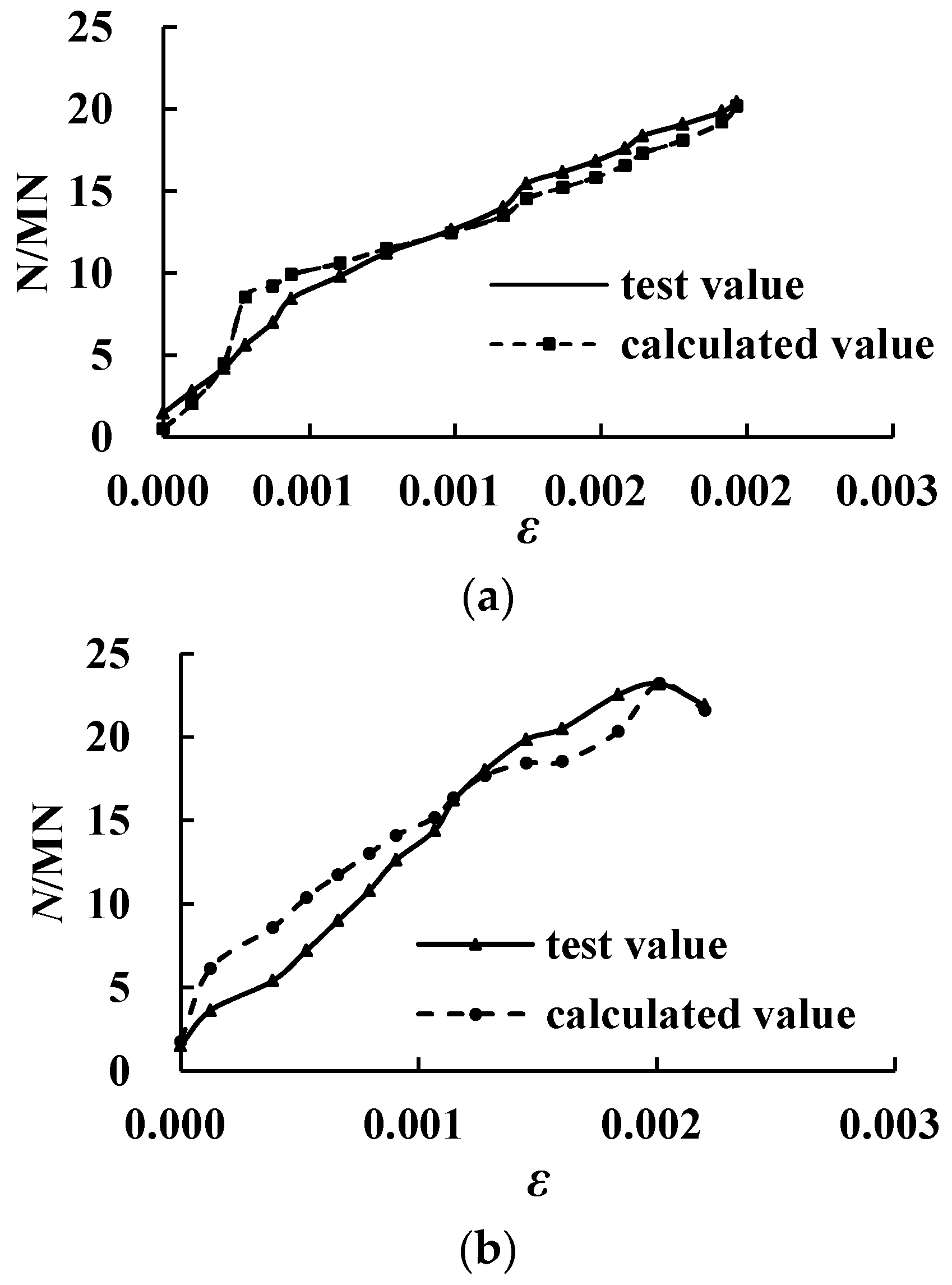
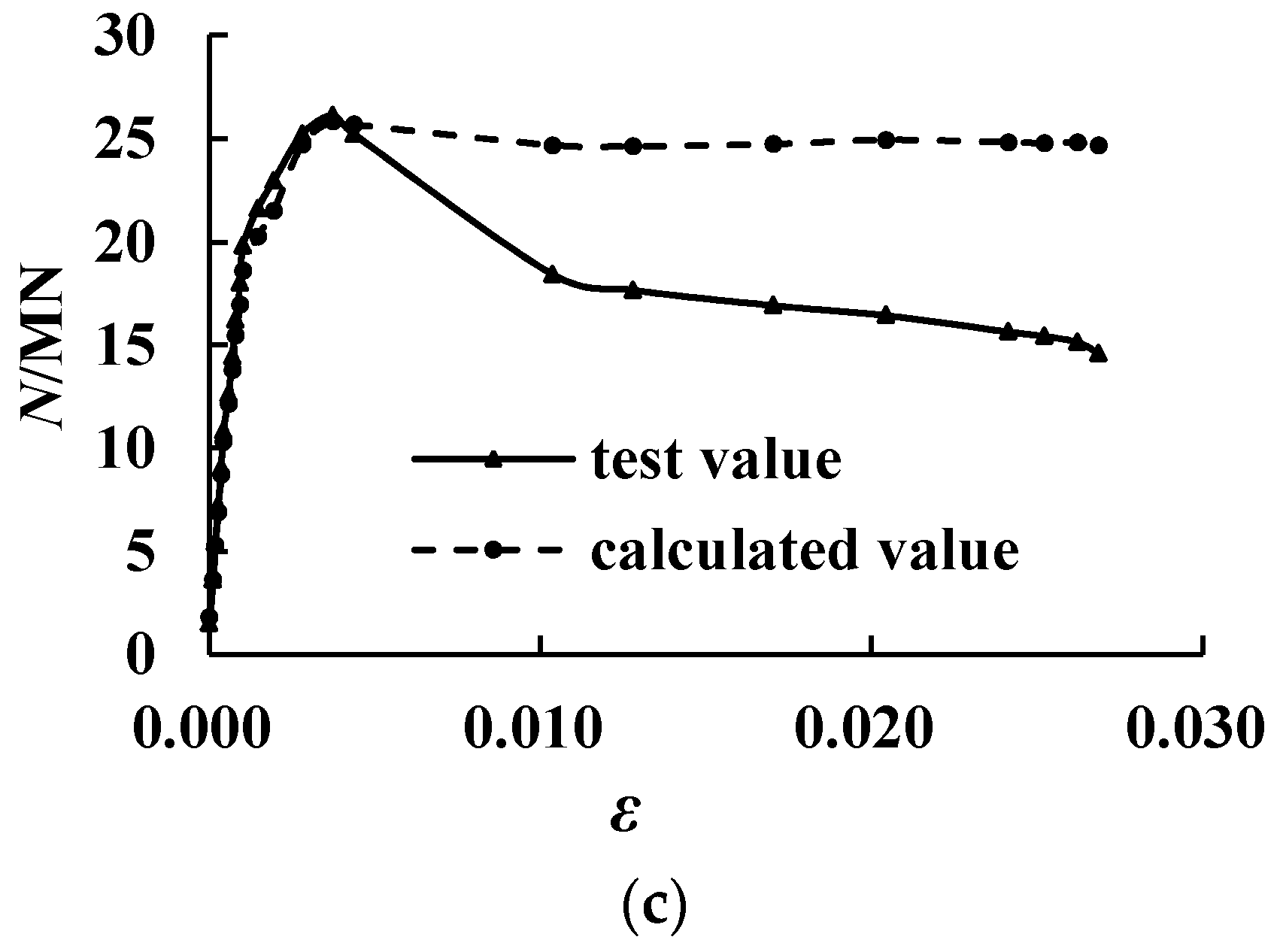
| Type | Dimensions/mm | fy/MPa | fu/MPa | δ/% | Es/MPa |
|---|---|---|---|---|---|
| Steel plate | 16 (thickness) | 333 | 532 | 17.38 | 2.06 × 105 |
| Steel plate | 8 (thickness) | 376 | 498 | 24.30 | 2.09 × 105 |
| Steel plate | 6 (thickness) | 374 | 520 | 26.51 | 2.02 × 105 |
| Steel bar | 14 (diameter) | 453 | 458 | 30.60 | 2.02 × 105 |
| Steel bar | 6 (diameter) | 385 | 386 | 32.20 | 2.02 × 105 |
| Lead wire | 4 (diameter) | 359 | 468 | 34.10 | 2.04 × 105 |
| stud | 5 (diameter) | 636 | - | - | - |
| Specimen No. | Crack Load | Yield Load | Ultimate Load | Failure Load | ||||
|---|---|---|---|---|---|---|---|---|
| N/MN | Δcr/mm | N/MN | Δy/mm | N/MN | Δp/mm | N/MN | Δu/mm | |
| HGW-1 | 3.6 | 0.463 | — | — | 20.46 | 3.535 | 20.46 | 3.535 |
| HGW-2 | 5.4 | 0.697 | — | — | 23.20 | 3.617 | 21.91 | 3.960 |
| HGW-3 | — | — | 21.63 | 2.927 | 26.14 | 7.503 | 19.42 | 20.743 |
| Specimen No. | Calculated Buckling Stress (N/mm2) | Test Buckling Stress (N/mm2) | Yield Stress (N/mm2) | η |
|---|---|---|---|---|
| HGW-1 | 133 | 333 | 333 | - |
| HGW-2 | 689 | - | 333 | - |
| HGW-3 | 302 | 311 | 376 | 0.719 |
| Specimen No. | Np/kN | Nc/kN | Ns/kN | Ncal/kN | Ntest/kN | Ncal/Ntest |
|---|---|---|---|---|---|---|
| HGW-1 | 6394 | 12,349 | 1394 | 20,092 | 20,427 | 0.984 |
| HGW-2 | 7296 | 15,037 | 1394 | 23,727 | 23,203 | 1.023 |
| HGW-3 | 6899 | 17,340 | 1275 | 25,514 | 26,139 | 0.976 |
© 2017 by the authors. Licensee MDPI, Basel, Switzerland. This article is an open access article distributed under the terms and conditions of the Creative Commons Attribution (CC BY) license ( http://creativecommons.org/licenses/by/4.0/).
Share and Cite
Hao, T.; Cao, W.; Qiao, Q.; Liu, Y.; Zheng, W. Structural Performance of Composite Shear Walls under Compression. Appl. Sci. 2017, 7, 162. https://doi.org/10.3390/app7020162
Hao T, Cao W, Qiao Q, Liu Y, Zheng W. Structural Performance of Composite Shear Walls under Compression. Applied Sciences. 2017; 7(2):162. https://doi.org/10.3390/app7020162
Chicago/Turabian StyleHao, Tingyue, Wanlin Cao, Qiyun Qiao, Yan Liu, and Wenbin Zheng. 2017. "Structural Performance of Composite Shear Walls under Compression" Applied Sciences 7, no. 2: 162. https://doi.org/10.3390/app7020162





